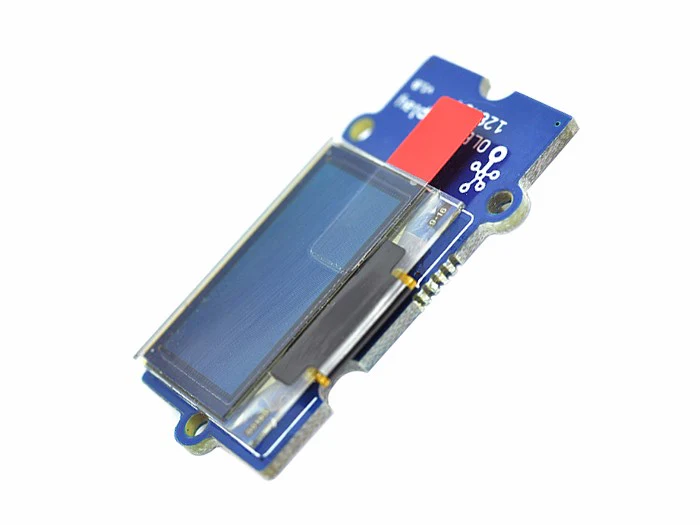
Grove - OLED Display 0.96"
Sold outGrove - OLED Display 0.96” module is an OLED monochrome 128×64 dot matrix display module with Grove 4pin I2C Interface.
Overview
Compared to LCD, OLED screens have a number of advantages such as high brightness, self-emission, high contrast ratio, slim / thin outline, wide viewing angle, wide temperature range, and low power consumption.
Features:
- Grove compatible Interface
- Communicate Mode: I2C
- Low power consumption
- Display Color: White
- Wide range of operating temperature: -20℃~70℃
Tech specs
Specifications
|
Items |
Min |
Norm |
Max |
Unit |
|
Power Voltage (VCC) |
3.3 |
5.0 |
5.5 |
V |
|
Driver IC |
- |
SSD1308Z |
- |
- |
|
Display Color |
- |
White |
- |
- |
|
Dot Matrix |
- |
128×64 |
- |
- |
|
Panel Size |
- |
26.7(W)×19.26(H) |
- |
mm |
|
Active Area |
- |
21.74(W)×11.175 (H) |
- |
mm |
|
Dot Pitch |
- |
0.17(W)×0.175 (H) |
- |
mm |
|
Dot Size |
- |
0.15(W)×0.15 (H) |
- |
mm |
|
Wide range of operating temperature |
- |
-20~70 |
- |
℃ |






